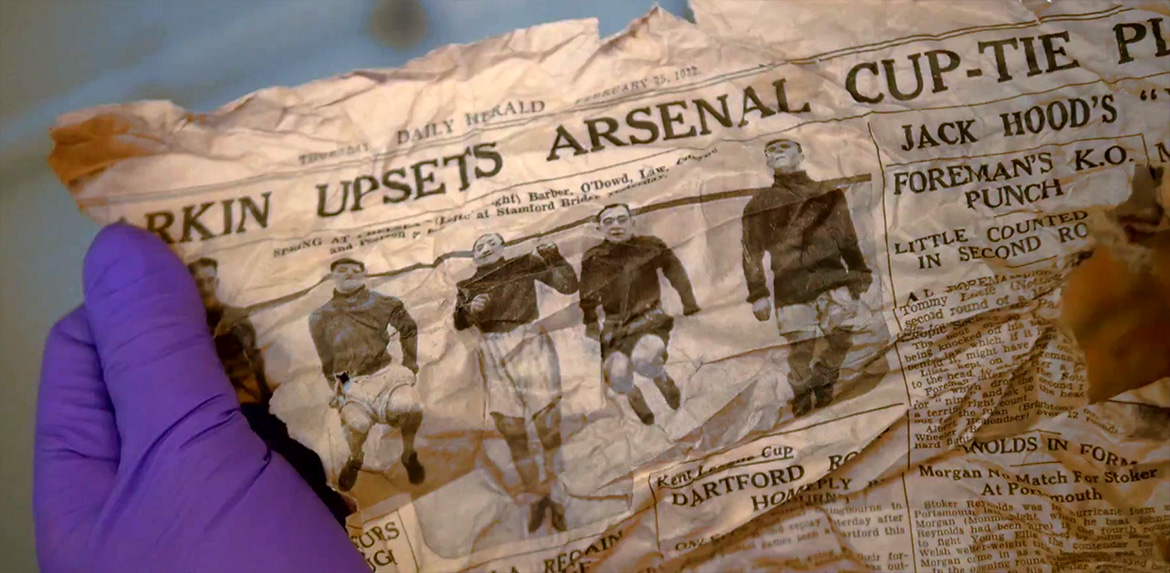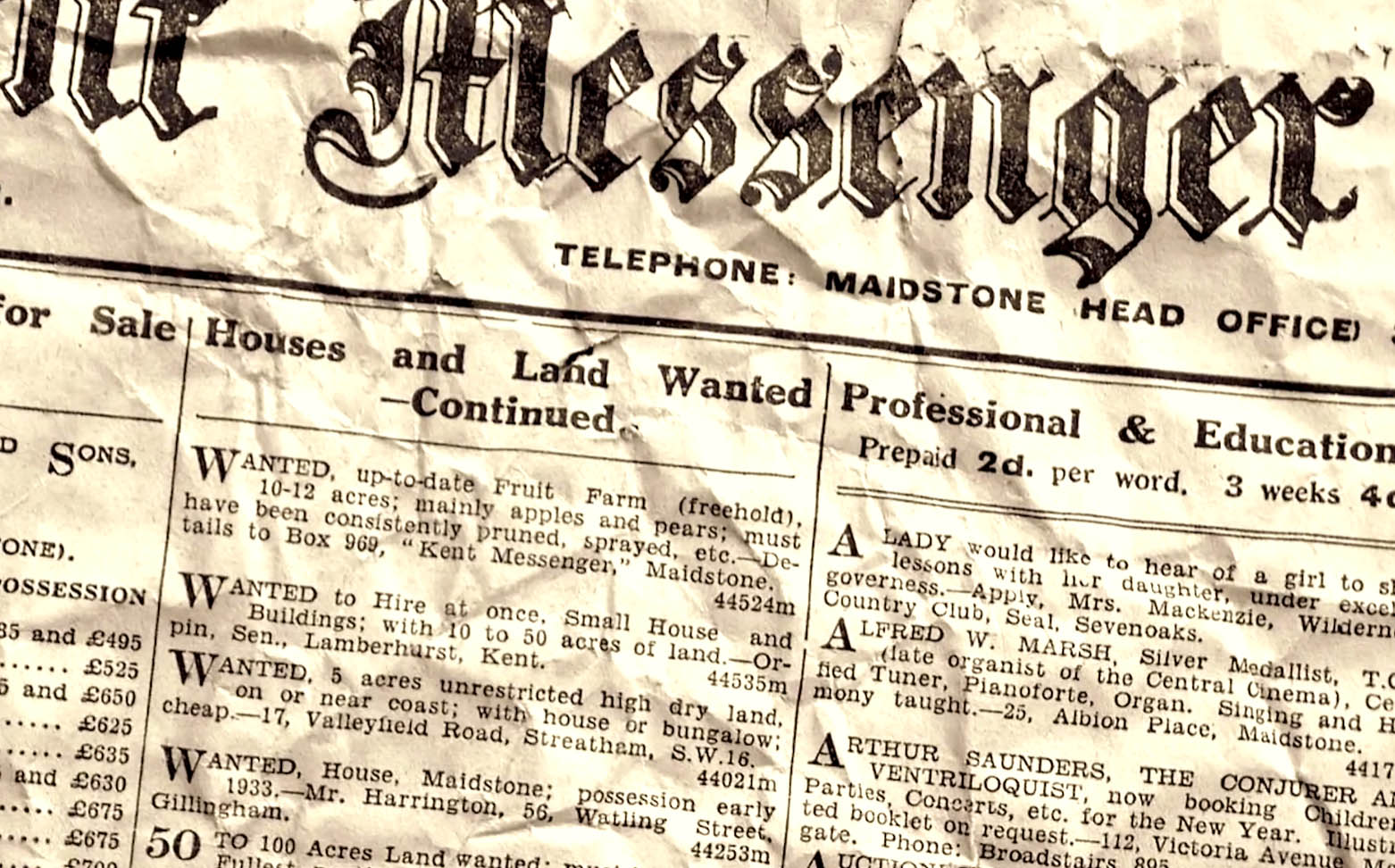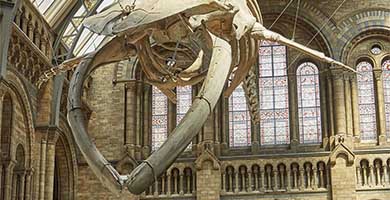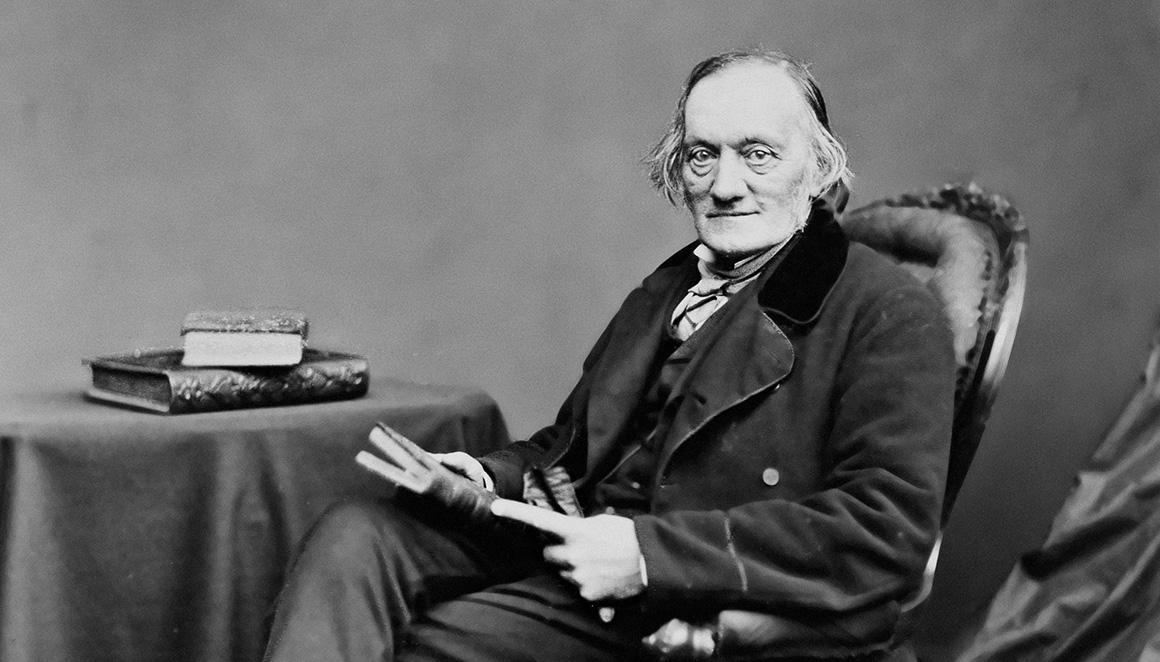Discover how crumpled newspapers have turned a blue whale skeleton into a historical treasure trove.

The blue whale skeleton suspended in Hintze Hall has aquired a rich history, both on and off public display, since its arrival at the Museum in 1892. It is now a 130-year-old artefact, with new snippets from its extraordinary past still being uncovered.
Conservation volunteer Patricia O'Brien tells us about the discovery of 80-year-old newspaper fragments that conservators found while preparing the whale for its new home.
They came from the inside the intervertebral discs - the layers of cartilage separating the bones in the spine.
Whale unveiled
In 1930s London, staff at the Natural History Museum were preparing the building's newest gallery, the Whale Hall.
Filled with aquatic giants and exotic mammals, the new building had a roof sturdy enough for a suspended, 25-metre blue whale skeleton.
The specimen had been in storage since 1892, waiting for a home in the Museum.
During that time, the cartilage discs between the animal's vertebrae were lost. A simple solution to replace them was needed before the specimen could be hung from the ceiling.
Life in the 1930s
New discs were made from wooden blocks and plaster of Paris, but also newspapers of the day - perhaps brought in by curators from their morning commute.

A page from the Kent Messenger
Pages from the Kent Messenger, Evening News, Evening Standard and St Pancras Gazette were placed among the vertebras, readying the skeleton for display.
The newspapers stayed with the whale until curators brought down the bones in 2015.
Patricia spent three months humidifying and laying out the newspapers which now provide a snapshot of life in London in the 1930s.

See the blue whale
Visit the Museum to walk beneath the largest animal ever to have lived.



Don't miss a thing
Receive email updates about our news, science, exhibitions, events, products, services and fundraising activities. We may occasionally include third-party content from our corporate partners and other museums. We will not share your personal details with these third parties. You must be over the age of 13. Privacy notice.
Follow us on social media